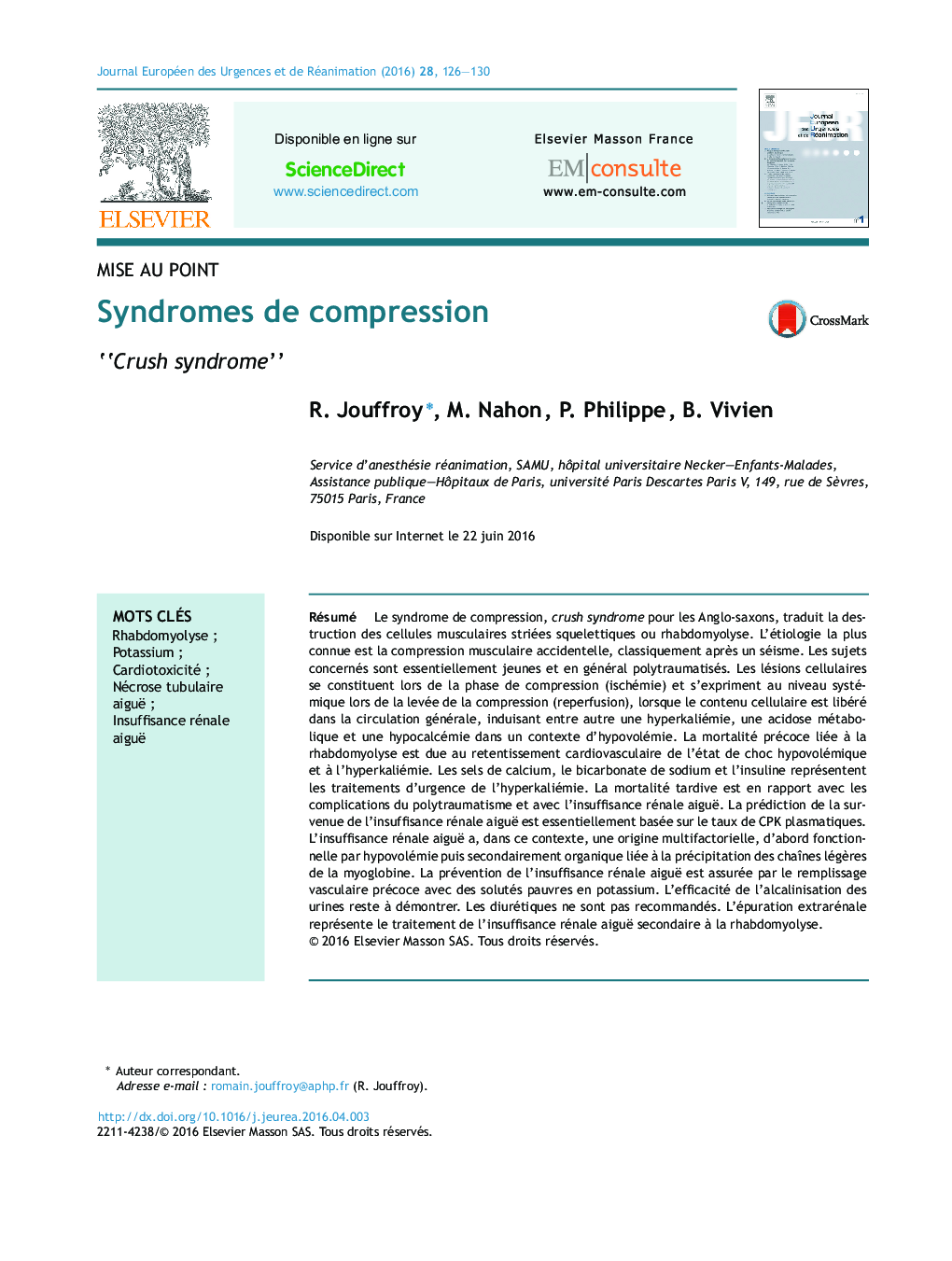| Article ID | Journal | Published Year | Pages | File Type |
|---|---|---|---|---|
| 3251390 | Journal Européen des Urgences et de Réanimation | 2016 | 5 Pages |
Abstract
Crush syndrome reflects destruction of skeletal muscle cells named rhabdomyolysis. The most known aetiology is accidental muscle compression, especially after earthquake. Victims are mostly young people with multiple trauma. Cell injuries form during compression phase (ischemia) but expression occurs at the time upon decompression (reperfusion) when the cell content is released into the general circulation, inducing hyperkalemia, metabolic acidosis and hypocalcemia in a context of hypovolemia. Early mortality is related to cardiovascular repercussions of hypovolemic shock and hyperkalemia. Calcium salts, sodium bicarbonate and insulin represent emergency treatments of hyperkalemia. Late mortality is related to complications of multiple trauma and acute renal failure. Prediction of the onset of acute renal failure is mainly based on CPK plasma level. Aetiology of acute renal failure is multifactorial, primitively functional due to hypovolemia and secondarily organic due to precipitation of light chains of myoglobin. Prevention of acute renal failure is ensured by early vascular filling. Potassium poor solutions are recommended. Effectiveness of urine alkalinization remains to be demonstrated and diuretics are not recommended. The extrarenal replacement therapy is treatment of acute renal failure secondary to rhabdomyolysis.
Keywords
Related Topics
Health Sciences
Medicine and Dentistry
Emergency Medicine
Authors
R. Jouffroy, M. Nahon, P. Philippe, B. Vivien,
